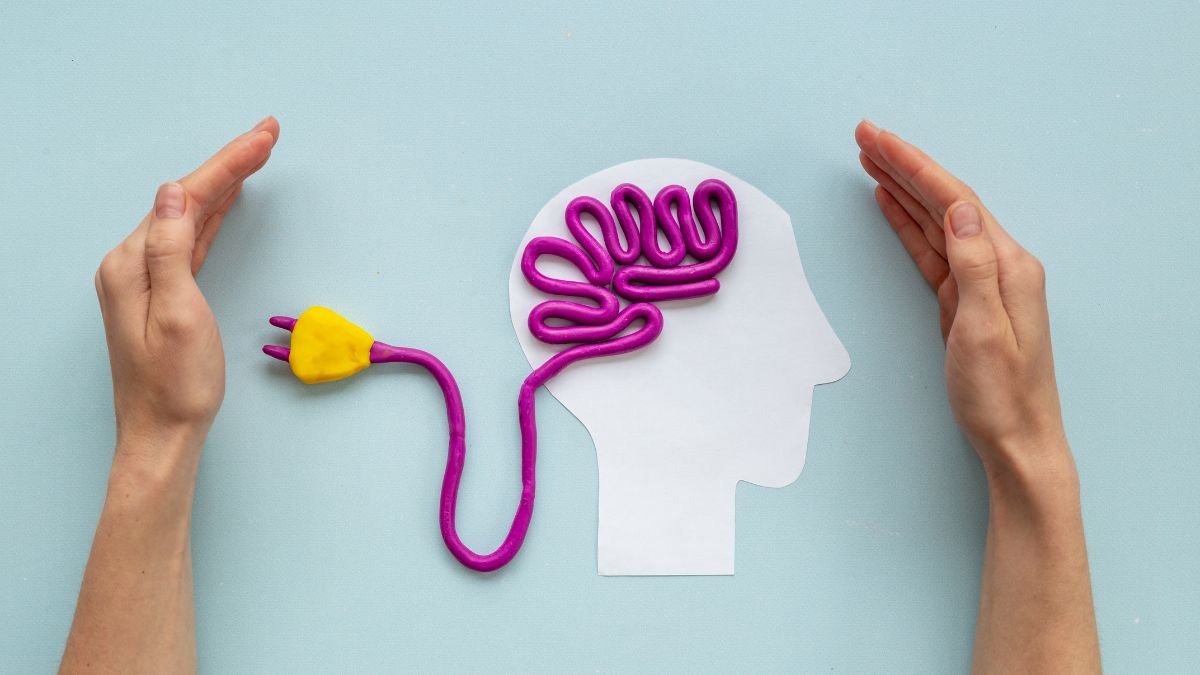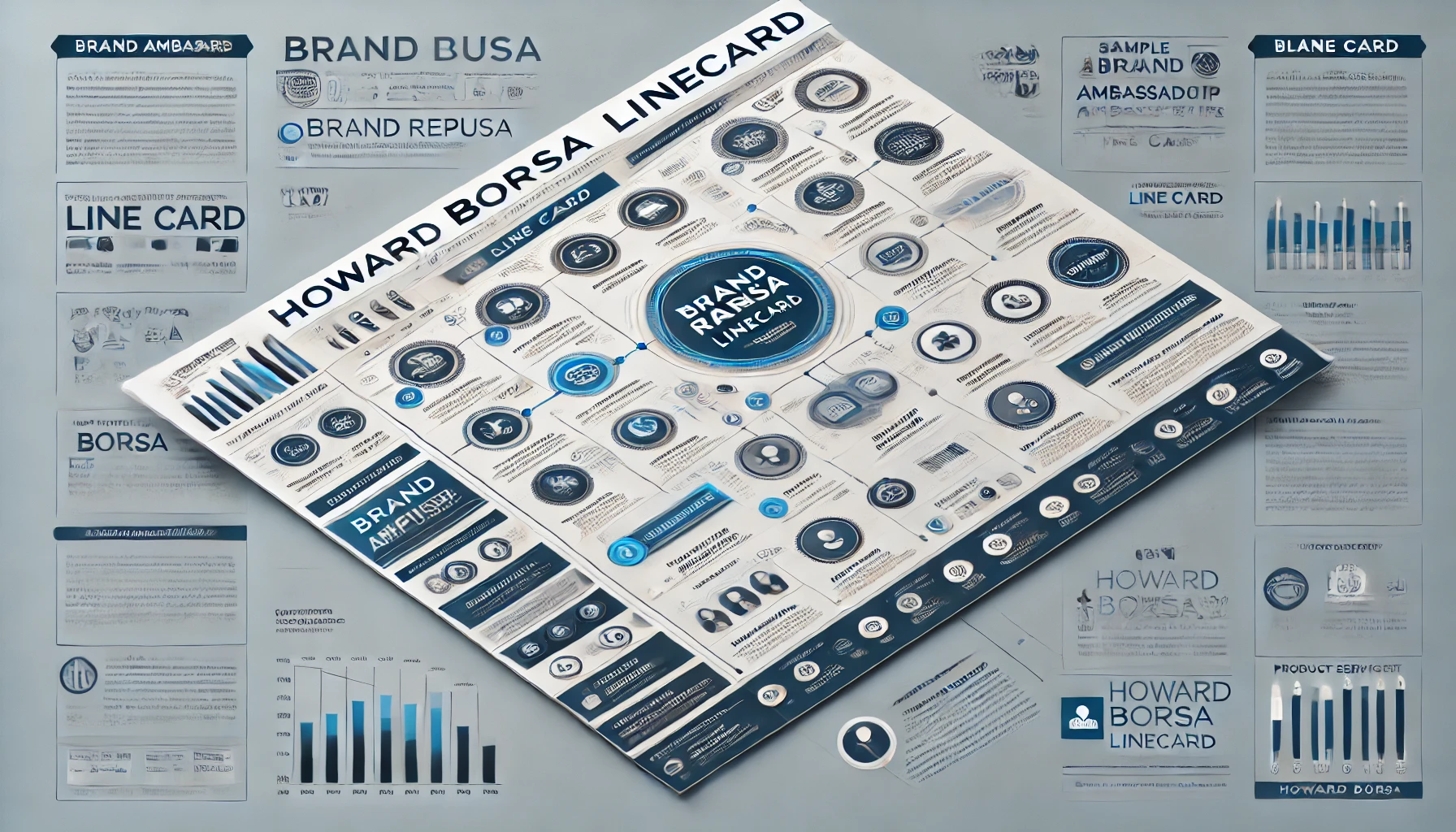Blog
What is Projective Drawing? Meaning, Techniques, and Applications

Projective drawing is a fascinating psychological technique used by mental health professionals, educators, and researchers to explore an individual’s inner world. It is a projective test, meaning it provides insight into a person’s emotions, thoughts, and personality traits through the process of creating and interpreting drawings. Unlike structured assessments, projective drawing allows for a more open-ended and creative expression, making it a valuable tool in various contexts.
This article will delve into what projective drawing is, how it works, the different techniques used, its applications, and the benefits and limitations of this unique psychological tool. Whether you’re a psychologist, educator, or simply curious about the intersection of art and psychology, this comprehensive guide will help you understand the significance of projective drawing.
Contents
What is Projective Drawing?

Projective drawing is a method used to assess an individual’s psychological state by interpreting their drawings. It is based on the premise that when a person is asked to draw something, they unconsciously project their inner thoughts, feelings, and conflicts onto the paper. This projection provides a window into their subconscious mind, revealing aspects of their personality, emotional state, and underlying issues that might not be easily accessible through verbal communication.
The technique is often used in psychological evaluations, therapy, and research. It can be particularly helpful with children, who may struggle to articulate their emotions verbally but can express themselves more freely through drawing.
How Does Projective Drawing Work?

The process of projective drawing typically involves asking the participant to create a drawing based on a specific prompt. The prompt might be general, such as “draw a person” or “draw a house,” or more specific, like “draw your family” or “draw how you feel.” The drawing is then analyzed by a trained professional who looks for various elements, including the content, composition, use of space, and details within the drawing.
The interpretation is based on established psychological theories, such as psychoanalysis or humanistic psychology, and can reveal patterns related to the individual’s emotional state, personality traits, and possible conflicts or concerns. While the interpretation is subjective, it provides valuable insights that can be used in therapy, diagnosis, or educational settings.
Techniques in Projective Drawing

IMAGES ARE USED FOR JUST ENTERTAINMENT PURPOSE
There are several techniques and types of projective drawing assessments, each with its own specific focus and methodology. Some of the most common include:
1. House-Tree-Person (HTP) Test
- The House-Tree-Person test is one of the most widely used projective drawing techniques. Participants are asked to draw a house, a tree, and a person, each representing different aspects of the self. The house typically symbolizes the individual’s home life and relationships, the tree reflects their self-perception and growth, and the person often represents the self-image or how they see others. The drawings are analyzed for various factors, such as size, placement, and details, to gain insight into the participant’s psychological state.
2. Draw-A-Person (DAP) Test
- The Draw-A-Person test is another popular projective drawing assessment. Participants are asked to draw a person, and the drawing is evaluated for aspects such as the person’s size, posture, facial expression, and clothing. The interpretation focuses on how the participant perceives themselves and others, as well as their emotional state and potential conflicts. Sometimes, participants are asked to draw additional figures, such as a person of the opposite sex or a person of the same age.
3. Kinetic Family Drawing (KFD)
- In the Kinetic Family Drawing, participants are asked to draw their family members doing something together. This technique is particularly useful for understanding family dynamics, relationships, and the participant’s role within the family. The drawing is analyzed for the size and placement of the figures, the actions depicted, and the emotional tone of the scene. This technique is often used with children and adolescents to explore their perceptions of their family environment.
4. Thematic Apperception Test (TAT)
- While not strictly a drawing test, the Thematic Apperception Test involves interpreting pictures and creating stories based on them. It shares similarities with projective drawing in that it taps into the participant’s subconscious mind. The TAT is often used alongside projective drawings to provide a more comprehensive understanding of the individual’s psychological state.
Applications of Projective Drawing
Projective drawing is used in various settings, each with distinct goals and outcomes. Some of the primary applications include:
1. Clinical Psychology and Therapy
- In clinical psychology, projective drawing is a valuable tool for assessing and diagnosing mental health issues. It is often used in the early stages of therapy to gain insight into a client’s emotional state, personality, and unresolved conflicts. The drawings can reveal underlying issues that may not be easily accessible through conversation alone. They also serve as a non-threatening way for clients, especially children, to express their feelings.
2. Educational Settings
- Educators and school psychologists use projective drawing to understand students’ emotional well-being, social interactions, and cognitive development. For example, a child’s drawing of their family can provide clues about their home environment, relationships with family members, and any anxieties they may be experiencing. Projective drawing can also help identify learning disabilities or developmental delays.
3. Research
- Researchers in psychology and social sciences use projective drawing to study various aspects of human behavior and development. By analyzing patterns in drawings across different populations, researchers can explore cultural differences, developmental stages, and the impact of trauma or other life experiences on psychological well-being.
4. Art Therapy
- In art therapy, projective drawing is a central technique used to help clients explore and process their emotions through creative expression. Art therapists guide clients in creating drawings, paintings, or other forms of visual art, which are then discussed and interpreted. This process can be especially helpful for individuals who find it difficult to verbalize their feelings or experiences.
Benefits of Projective Drawing
Projective drawing offers several benefits as a psychological assessment tool:
1. Non-Verbal Expression
- For individuals who struggle with verbal communication, projective drawing provides an alternative way to express emotions, thoughts, and experiences. This is particularly useful for children, individuals with language barriers, or those who have experienced trauma.
2. Insight into the Subconscious
- Projective drawing taps into the subconscious mind, revealing thoughts, feelings, and conflicts that might not be accessible through conscious thought. This can provide valuable insights for therapists and psychologists when working with clients.
3. Flexibility and Creativity
- The open-ended nature of projective drawing allows for creative expression and can adapt to the needs of different individuals. The process can be tailored to specific therapeutic goals, making it a versatile tool in various contexts.
4. Engagement and Comfort
- Drawing can be an engaging and enjoyable activity, especially for children. The non-threatening nature of projective drawing helps build rapport between the client and therapist, creating a safe space for exploration.
Limitations of Projective Drawing
While projective drawing is a valuable tool, it does have some limitations:
1. Subjective Interpretation
- One of the main criticisms of projective drawing is the subjective nature of interpretation. Different psychologists may have varying interpretations of the same drawing, leading to inconsistencies in assessments. To mitigate this, it is important for professionals to use standardized guidelines and combine drawing interpretations with other assessment methods.
2. Cultural and Contextual Factors
- Cultural differences can influence the content and style of drawings, potentially leading to misinterpretations. For example, certain symbols or imagery may have different meanings in different cultures. It is crucial for professionals to consider the cultural background of the individual when interpreting projective drawings.
3. Limited Scientific Validity
- Projective drawing is often criticized for its lack of scientific validity compared to more structured assessments. While it provides valuable qualitative insights, it is not always reliable as a standalone diagnostic tool. It is most effective when used in conjunction with other assessment methods.
The Future of Projective Drawing
As psychology and mental health practices continue to evolve, projective drawing remains a relevant and valuable tool. Advances in technology, such as digital drawing platforms, offer new possibilities for integrating projective drawing into therapy and research. Additionally, ongoing research into the validity and reliability of projective techniques may help address some of the criticisms and enhance their effectiveness.
Projective drawing also holds promise in areas such as virtual reality (VR) and artificial intelligence (AI). VR could provide immersive environments for individuals to create projective drawings, offering new ways to explore their inner world. AI could assist in analyzing drawings by identifying patterns and correlations that might be missed by human interpretation.
Conclusion: The Power of Projective Drawing
In conclusion, projective drawing is a powerful tool that offers unique insights into the human psyche. By allowing individuals to project their inner thoughts and feelings onto paper, it provides a window into the subconscious that can be invaluable in therapy, education, and research. While it has its limitations, the benefits of projective drawing make it a valuable addition to any psychological assessment or therapeutic approach.
Whether you’re a mental health professional, educator, or simply interested in the field of psychology, understanding projective drawing can open up new avenues for exploring the mind and helping individuals express themselves in meaningful ways.
Before Ending, I’ve noticed your interest in Our Blog. We have covered the topic “What is H5 FireKirin? An Online Fish Game Platform,” which you can explore on our blog.
Post Disclaimer
The information contained in this post is for general information purposes only. The information, including images, is provided by What is Projective Drawing? Meaning, Techniques, and Applications, and while we endeavor to keep the information accurate, we make no representations or warranties of any kind, express or implied, about the completeness, accuracy, reliability, suitability, or availability with respect to the website or the information, products, services, or related graphics contained on the post for any purpose. Please note that images used in this post may be included for entertainment purposes and do not necessarily represent factual or real-life scenarios.
Blog
How to Create an Absence Management Policy That Works?
Absence management is an important function that ensures productivity and a balanced distribution of workload within the organisation.

Absence management is an important function that ensures productivity and a balanced distribution of workload within the organisation. A good policy on absence management describes time-off request procedures to the employee and informs them of types of leave approved by the policy, such as sick, personal, or family emergency, and describes in detail a procedure for presenting notice to the supervisor. By establishing expectations regarding absence procedures, the organisation may prevent misunderstandings and manage absences fairly and consistently. A structured approach to work absence management is also supportive of employee welfare and a more productive workplace. This article shall provide the steps to create a policy that meets operational needs yet respects the rights of employees and offers transparency. By focusing on key areas, businesses can develop an absence management policy that works for both the company and its employees.
Contents
Define Types of Absence and Eligibility
An effective absence management policy starts by defining the different types of absences permitted such as sick leave, personal leave, and bereavement leave. In defining the categories, the employee is aware of the leave eligibility and when it applies. This will avoid confusion and apply the policy fairly to each department. Each category needs to include specific eligibility requirements and documentation, such as doctor’s notes, which helps make the policy more clear and manageable. This can help managers fairly enforce the policy so that there is consistency and fairness in the organisation.
Develop a Clear Process for Notification
A system for notification on the proper supervisor shall appear in an effective absence management policy. Employees should also be apprised, as is proper, with whom to connect and what mode they wish for the period of report: if caused by an organised event, this should best be done, if not before, ahead of time for the exact date to report. Of course, this is still applicable to untimely incidences of diseases and the rest; an ideal call will be via e-mail or internet networking to quickly notify of its absence. It can be set up by establishing a notification timeline to prevent disruption of operations by allowing the managers to change the workloads or get temporary replacements if necessary. A well-defined notification procedure removes confusion and enhances communication.
Create an Absence Tracking System
Companies should come up with an efficient tracking system for managing absences. This could be a computerised program that captures every absence and categorises it according to the firm’s policies. A tracking system can let managers understand the patterns of absenteeism and identify repeating issues that require attention. Accurate records also allow the HR team to enforce the policy equitably so that it remains consistent. It also assists in tracing any documentation, like medical certificates, which needs to be produced, so that the record of all absences is kept clear and adherence to the company policy is maintained.
Develop Return-to-Work Procedures
Procedures for returning to work constitute an essential part of a wider absence management policy, particularly for extended periods off due to illness or injury. An established procedure helps employees navigate a return-to-work interview or a health assessment so that they can return to their duties when the time is right and are supported in doing so. Return-to-work guidelines allow managers to talk over any continued health or personal needs that will involve reasonable adjustments in working time or duties. Formalising the return process reduces disruption and helps employees get back to work.
Encourage Flexibility and Work-Life Balance
Flexibility is a vital element of a practical absence management policy, especially in today’s diverse workplace. It can be shown through this as the organisation makes such arrangements available to help in striking the right balance of work and life. By flexibility, the organisation is assured of reducing the occurrence of any unplanned absenteeism while improving morale and retention. The employee would thus have a better opportunity at his duties when he feels he is the master of his schedule while the opportunities for any kind of unscheduled off are minimised. Flexibility choices would raise overall job satisfaction and assist in building a helpful work culture.
Review the Policy Periodically and Make Required Updates
A successful absence management policy is dynamic. It keeps changing along with organisational needs as well as changing labour laws. Annual or semi-annual reviews will prove effective in making sure that the policy stays current and relevant. The frequent review allows the organisation to incorporate employee comments, to change with any changes that take place in the structure of the company, and to change with any new issues. Periodic review of the policy will allow companies to notice the areas of improvement. The companies make changes, hence maintaining the policy as being fair and clear. In this way, the improvement will ensure the policy maintains the operational needs of the business and ensures the employees’ well-being.
Conclusion
A properly implemented absence management policy serves as a very important ingredient of a productive, balanced, and fair workplace. A company can reduce this form of disruption, best support its teams by labelling clear categories of absences developing return-to-work procedures, and encouraging flexibility concerning this. This policy need not lose its constancy and relevance if the monitoring of absences is instituted and regular reviews are implemented. Lastly, a comprehensive absence management policy honours the needs of the organisation and its employees simultaneously and provides an environment at work where everyone is aware of the roles they play.
Post Disclaimer
The information contained in this post is for general information purposes only. The information, including images, is provided by How to Create an Absence Management Policy That Works?, and while we endeavor to keep the information accurate, we make no representations or warranties of any kind, express or implied, about the completeness, accuracy, reliability, suitability, or availability with respect to the website or the information, products, services, or related graphics contained on the post for any purpose. Please note that images used in this post may be included for entertainment purposes and do not necessarily represent factual or real-life scenarios.
Blog
What is BrandRepUSA Linecard? Understanding the Howard Borsa LineCard and Its Impact on Brand Ambassadorship

Contents
- 1 Introduction to BrandRepUSA Linecard
- 2 Key Features of the BrandRepUSA Howard Borsa LineCard
- 3 Benefits of the BrandRepUSA Linecard for Ambassadors
- 4 Quick Tips for Maximizing the BrandRepUSA Linecard
- 5 Pros and Cons of the BrandRepUSA Linecard
- 6 Key Terms in the BrandRepUSA Linecard
- 7 Highlighted Statistics on Brand Ambassadorship and Product Knowledge
- 8 Comparison: BrandRepUSA Linecard vs. Standard Product Catalogs
- 9 Frequently Asked Questions
- 10 Conclusion
Introduction to BrandRepUSA Linecard
The BrandRepUSA linecard serves as a key resource for brand ambassadors, outlining BrandRepUSA’s products, services, and brand values. Created as the Howard Borsa LineCard, this document combines high-quality visuals and detailed descriptions to bring the brand’s story to life. By consolidating essential information, it enables brand ambassadors to represent BrandRepUSA’s offerings effectively, establishing credibility and driving sales.
Key Features of the BrandRepUSA Howard Borsa LineCard
Comprehensive Product Overview
The BrandRepUSA linecard is more than a list of products; it provides in-depth information on each product, including:
- Product Images: High-quality visuals to showcase each item vividly.
- Detailed Descriptions: Compelling text that highlights key features and benefits.
- Brand Values: Communicates BrandRepUSA’s unique identity and commitment to quality.
Streamlined Information for Brand Ambassadors
The linecard functions as a centralized resource, making it easy for ambassadors to quickly access product information:
- Easy Reference: Contains product details that enable ambassadors to answer questions confidently.
- Contact Information: Includes key contact points for further inquiries, ensuring ambassadors have support when needed.
- Brand Narrative: Tells BrandRepUSA’s story, helping ambassadors convey the brand’s mission and values effectively.
Benefits of the BrandRepUSA Linecard for Ambassadors
The BrandRepUSA linecard provides significant advantages that enhance the effectiveness of brand ambassadors:
- Enhanced Credibility: Comprehensive product knowledge builds ambassador credibility with clients.
- Streamlined Communication: Reduces time spent searching for information, allowing ambassadors to focus on customer interaction.
- Sales Support: Detailed descriptions and product highlights assist ambassadors in promoting BrandRepUSA’s offerings.
Quick Tips for Maximizing the BrandRepUSA Linecard
- Familiarize Yourself with Key Products: Knowing essential details improves communication with potential customers.
- Leverage Visuals in Presentations: Use the high-quality images to make products more appealing.
- Highlight Brand Values: Share BrandRepUSA’s story to create a connection with customers.
Pros and Cons of the BrandRepUSA Linecard
| Pros | Cons |
|---|---|
| Centralized product information | May require regular updates with new products |
| High-quality visuals enhance engagement | Can be extensive, requiring time to review |
| Strengthens ambassador credibility | Limited effectiveness if not well utilized |
Key Terms in the BrandRepUSA Linecard
- Linecard: A document that provides an organized overview of a company’s products, brands, and services.
- Brand Narrative: The story behind a brand that includes its mission, values, and identity.
- Ambassador: A representative who promotes a brand’s products and values to potential customers.
Highlighted Statistics on Brand Ambassadorship and Product Knowledge
- Efficiency Increase: Ambassadors using linecards report a 30% reduction in time spent searching for product details.
- Customer Trust: Studies show a 40% increase in consumer trust when ambassadors demonstrate comprehensive product knowledge.
- Visual Impact: High-quality product images boost consumer interest by up to 50%.
Comparison: BrandRepUSA Linecard vs. Standard Product Catalogs
| Feature | BrandRepUSA Linecard | Standard Product Catalog |
|---|---|---|
| Content Focus | In-depth brand narrative, detailed product info | Primarily product listings without brand story |
| Visual Appeal | High-quality, engaging visuals | May vary; often limited to basic images |
| Ambassador Support | Designed for quick reference and storytelling | Primarily informational, less focus on narrative |
| Flexibility | Updated as needed with new products | Often static, requiring complete reprints |
Frequently Asked Questions
What is the purpose of the BrandRepUSA linecard?
The linecard provides brand ambassadors with comprehensive product information, high-quality visuals, and BrandRepUSA’s story, helping them present the brand effectively.
Who benefits from using the BrandRepUSA linecard?
Brand ambassadors and sales representatives benefit from this linecard as it streamlines product knowledge, builds credibility, and enhances customer engagement.
What makes the BrandRepUSA linecard different from a catalog?
Unlike a standard product catalog, the linecard includes brand narratives, high-quality visuals, and detailed descriptions, making it a storytelling tool as well as a product guide.
Is the BrandRepUSA linecard updated regularly?
Yes, updates are made as needed to include new products, ensuring ambassadors have the latest information.
Conclusion
The BrandRepUSA linecard, crafted as the Howard Borsa LineCard, is a comprehensive tool that enhances the brand ambassador experience. By providing detailed product information, brand narratives, and visually engaging elements, it empowers ambassadors to represent BrandRepUSA’s offerings effectively. This linecard serves as a valuable resource for fostering credibility, streamlining product knowledge, and driving sales.
Post Disclaimer
The information contained in this post is for general information purposes only. The information, including images, is provided by What is BrandRepUSA Linecard? Understanding the Howard Borsa LineCard and Its Impact on Brand Ambassadorship, and while we endeavor to keep the information accurate, we make no representations or warranties of any kind, express or implied, about the completeness, accuracy, reliability, suitability, or availability with respect to the website or the information, products, services, or related graphics contained on the post for any purpose. Please note that images used in this post may be included for entertainment purposes and do not necessarily represent factual or real-life scenarios.
Blog
What is 305-209-9818? Understanding the Origin and Risks of Calls from This Number

Contents
- 1 Introduction to 305-209-9818
- 2 Common Reports and Issues Associated with 305-209-9818
- 3 Recommended Actions if You Receive a Call from 305-209-9818
- 4 Benefits of Taking Precautions with Unsolicited Calls
- 5 Quick Tips for Handling Calls from Unfamiliar Numbers
- 6 Pros and Cons of Blocking Unknown Numbers Like 305-209-9818
- 7 Key Terms in Scam Prevention
- 8 Highlighted Statistics on Unsolicited Calls
- 9 Comparison: Responding vs. Blocking Calls from 305-209-9818
- 10 Frequently Asked Questions
- 11 Conclusion
Introduction to 305-209-9818
The phone number 305-209-9818 has been reported by individuals as a source of unsolicited and suspicious calls. Many recipients have raised concerns about telemarketing tactics and potential scam attempts associated with this number. The area code 305 is linked to Miami, Florida, although the true origin of calls from this number may vary. Understanding the nature of these calls can help you protect your personal information and avoid potential scams.
Common Reports and Issues Associated with 305-209-9818
Caller Behavior and Tactics
Several patterns have been observed with calls from 305-209-9818:
- Silent Calls: Some recipients report receiving calls that are silent, with no response from the other end.
- Aggressive Marketing: Others encounter aggressive sales tactics, often pressuring recipients to make immediate decisions.
- Requests for Personal Information: In some cases, callers have asked for sensitive details like social security numbers or bank information, raising concerns about possible scams.
Origin of Calls from 305-209-9818
The 305 area code corresponds to Miami, Florida. However, the actual location of calls from 305-209-9818 could vary due to spoofing, a tactic commonly used by scammers to mask their true location.
Recommended Actions if You Receive a Call from 305-209-9818
If you receive an unexpected call from 305-209-9818, consider taking these precautions:
- Do Not Answer Unrecognized Numbers: Allow unfamiliar calls to go to voicemail to screen for legitimacy.
- Do Not Share Personal Information: Avoid disclosing sensitive information unless you are confident about the caller’s identity.
- Block the Number: Use your phone’s built-in features or third-party apps to prevent further calls from 305-209-9818.
- Report Suspicious Activity: If you suspect fraudulent activity, report the number to relevant consumer protection agencies or authorities.
Benefits of Taking Precautions with Unsolicited Calls
By following these steps, you can gain several benefits:
- Protection from Scams: Avoiding interaction with suspicious numbers helps protect your personal and financial information.
- Enhanced Privacy: Blocking unwanted calls reduces unwanted intrusion and potential risks.
- Peace of Mind: Taking proactive steps helps you feel secure and informed about potential scams.
Quick Tips for Handling Calls from Unfamiliar Numbers
- Screen Voicemail First: Listen to any voicemail left by unknown callers before returning the call.
- Search the Number Online: Look up the number to see if other users have reported similar issues.
- Use Caller ID Apps: Consider installing apps that can identify spam or scam calls.
Pros and Cons of Blocking Unknown Numbers Like 305-209-9818
| Pros | Cons |
|---|---|
| Reduces exposure to potential scams | Might block legitimate calls from unknown numbers |
| Increases privacy and control | Requires management of blocking settings |
| Provides peace of mind | Possible inconvenience if the blocked number is legitimate |
Key Terms in Scam Prevention
- Caller ID Spoofing: A technique used to disguise the true origin of a call, often used in scams.
- Telemarketing: The marketing of goods or services by means of phone calls, sometimes unsolicited.
- Do Not Call Registry: A registry allowing individuals to opt out of telemarketing calls.
Highlighted Statistics on Unsolicited Calls
- Estimated Scam Calls: Over 50 billion spam calls were made in the US in 2022 alone.
- Prevalence of Spoofed Numbers: An estimated 25% of scam calls involve caller ID spoofing.
- User Reports on 305-209-9818: Numerous online platforms have received reports of suspicious behavior from this number.
Comparison: Responding vs. Blocking Calls from 305-209-9818
| Action | Responding to Call | Blocking the Number |
|---|---|---|
| Risk of Scams | Higher, as scammers may attempt to gather info | Lower, reduces exposure to potential scam attempts |
| Privacy Impact | Greater exposure if personal info is shared | Increased privacy by preventing further contact |
| Convenience | May answer important calls | May need to unblock if blocking affects legitimate calls |
Frequently Asked Questions
What should I do if I receive a call from 305-209-9818?
Consider letting the call go to voicemail, avoid sharing any personal information, and block the number if the call seems suspicious.
Is 305-209-9818 a legitimate number?
While the 305 area code is assigned to Miami, Florida, calls from 305-209-9818 have been reported as potentially suspicious, often related to telemarketing or scams.
Why do I keep getting calls from 305-209-9818?
Scammers often target multiple recipients repeatedly. Blocking the number and reporting it can help reduce these unwanted calls.
How can I block calls from 305-209-9818?
Use your phone’s blocking feature or install a third-party app to block calls from this number.
Conclusion
Receiving calls from 305-209-9818 has raised concerns due to reports of unsolicited and potentially fraudulent calls. Taking precautions—such as blocking the number, avoiding the sharing of personal information, and reporting suspicious activity—can help protect your privacy and security. Staying vigilant with unknown numbers and maintaining awareness of common scam tactics is essential in safeguarding personal information.
Post Disclaimer
The information contained in this post is for general information purposes only. The information, including images, is provided by What is 305-209-9818? Understanding the Origin and Risks of Calls from This Number, and while we endeavor to keep the information accurate, we make no representations or warranties of any kind, express or implied, about the completeness, accuracy, reliability, suitability, or availability with respect to the website or the information, products, services, or related graphics contained on the post for any purpose. Please note that images used in this post may be included for entertainment purposes and do not necessarily represent factual or real-life scenarios.
-

 Entertainment10 months ago
Entertainment10 months agoWhat is Masqlaseen? A Complete Overview
-

 Entertainment9 months ago
Entertainment9 months agoWhat is Moye Moye? Understanding the Serbian Phrase and its Meaning
-

 Entertainment9 months ago
Entertainment9 months agoWhat is soymamicoco? A Complete Guide
-

 Technology8 months ago
Technology8 months agoWhat is an XCV Panel? A Guide to Its Uses and Benefits
-

 Entertainment8 months ago
Entertainment8 months agoIs Ztec100.com Your One-Stop Shop for Digital Solutions?
-

 Business8 months ago
Business8 months agoWhat is Roadget Business?
-

 Entertainment8 months ago
Entertainment8 months agoWhat is 06shj06? – Uncover The Mystery
-

 Entertainment8 months ago
Entertainment8 months agoWho is Elon Musk? – Unveiling the Visionary Entrepreneur




